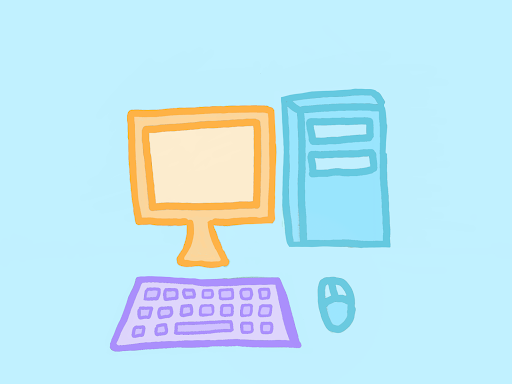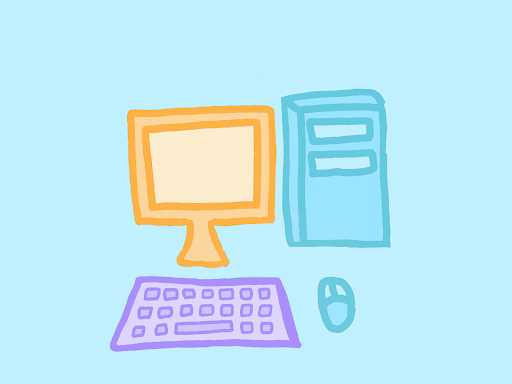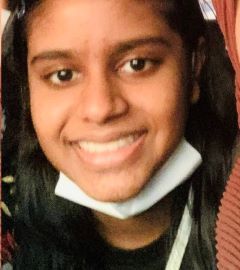The Personal Computer

Charles Babbage, popularly known as the father of the modern computer, began working on his first engine, the difference engine. He kept working on it until he had to give up due to difficulties and started working on a new machine called the analytical engine. Meanwhile, Charles Babbage and Ada Lovelace met through their mutual friend Mary Somerville, and Ada was interested in Charles Babbage's inventions. Finally, Ada Lovelace made a program for the analytical engine, and later on, modern engineers and programmers invented the computer.
The weather was warm and sunny. It was a busy day, just as usual. I was sitting in front of my PC, listening to the teacher explain about the computer’s history while I scribbled freely on my notebook. She talked about Blaise Pascal, Charles Babbage and how the first computer was programmed, as well as what earlier computers looked like.
After all my online classes finished, I was more curious to know about computers. Before I also used to think that computers must be really advanced machines, but I was never curious enough to start searching about it.

To start off, let’s begin with how the computer was first invented, with a brief introduction.
Charles Babbage, popularly known as the father of computers, was born on December 26 1791, in London. He was born to a rich family and was educated mostly by private tutors. In 1810, he attended trinity college and later found out that he was so good at maths, even better than his teachers! Later on, after completing his education, he became a mathematician.
Much later, in 1819, Charles Babbage began working on his first engine, which was the difference engine. He finished working on it in 1822. However, it was quite hard to make this because of the era, which was not capable of producing the parts done by metalwork. It was pretty expensive making this too. The difference engine was designed to calculate and arrange polynomial functions, which basically means that it’s a machine which can calculate a number of values and that prints the results (automatically) into a table.
However, after (having to) give up on the difference engine, he made a fresh new start and began his attempt to make another machine, which, as you wouldn’t have expected but was and is still named the world's (known to be) first computer. It is the analytical engine and is quite similar to the difference engine. However, there are some differences in general. The difference engine can only perform addition, yet the analytical engine can perform addition, subtraction, multiplication and division!
The difference engine is also quite simple compared to the analytical engine, which is a general purpose computer system. The analytical engine in general, was a computer which is programmed and fully controlled, included with an automatic mechanical digital computer into it. Everything was being programmed with help from punch cards!
Charles Babbage’s work on the analytical engine came to an end in 1873, which started off in 1838, his first design being done in 1834. Also, before these engines were introduced, people used to do all their calculations by themselves, so in those days you never know even if your tutor might have gotten a question wrong!
After the first computer-like machine was invented, it needed to be programmed. Ada Lovelace was the first computer programmer. She and Charles Babbage had actually met through their mutual friend, Mary Somerville. Since they met, Ada has been quite interested in Charles' machines and has visited him often. One time, during 1842-43 she translated an Italian article about Charles Babbage's analytical engine, which she took notes of. Somehow these notes turned into the world’s first computer program.
References:
https://en.wikipedia.org/wiki/Computer
https://en.wikipedia.org/wiki/Personal_computer
https://opentextbc.ca/computerstudies/chapter/types-of-computers/
https://plato.stanford.edu/entries/computing-history/
https://www.youtube.com/watch?v=IgF3OX8nT0w
https://en.wikipedia.org/wiki/Ada_Lovelace
https://blog.bricsys.com/who-was-th-first-computer-programmer/
https://en.wikipedia.org/wiki/Charles_Babbage
https://www.youtube.com/watch?v=BA5Mpd5jaVo
https://en.wikipedia.org/wiki/History_of_personal_computers
https://www.geeksforgeeks.org/difference-between-difference-engine-and-analytical-engine/
Author biography
Aishath Aleesha Azheen is a 14 year old living in Male' and is attending the AIS school. She is a fan of K-pop and building Lego, although she doesn’t have many. Another one of her hobbies would be reading books or *trying* to draw most of the time. She is generally the kind of person you meet who says to not have a favourite colour, and also to have an extreme fear of bananas. Aleesha desires to become a psychologist when she grows up, and is also invested in investigating random topics on google.

Cite this article as:
Aishath Aleesha Azheen, The Personal Computer, theCircle Composition, Volume 2, (2022). https://theCircleComposition.org/the-personal-computer/
